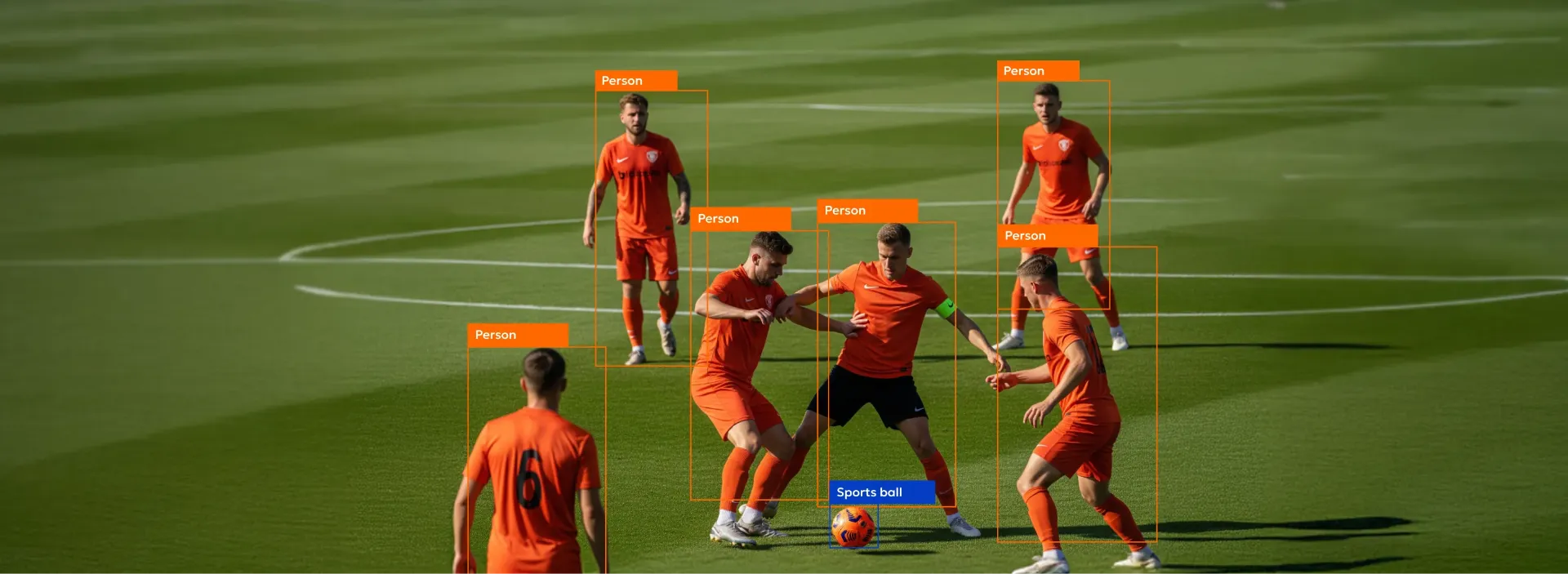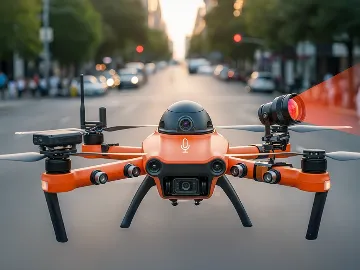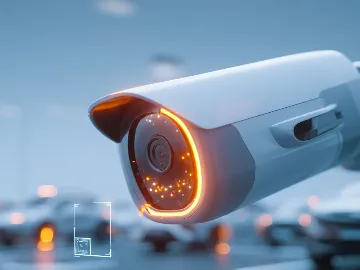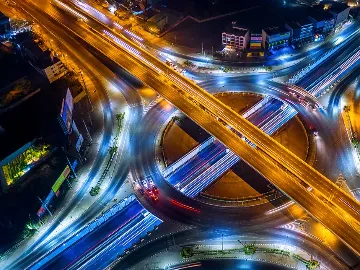If your organization records every second of gameplay, training, or athlete movement, why is so little of it ever used?
Stadiums are wired with HD cameras, and athletes wear trackers. Hours of footage are collected from matches, practices, rehab sessions, and fan zones. And yet, in most sports environments, analysts still annotate clips manually. Coaches rely on basic stats and hunches, and referees call on limited replays. Strategy decisions are based more on tradition than evidence.
Meanwhile, computer vision analyzes video directly, detecting movement, tracking objects, measuring posture, and extracting structured data from raw footage. It works directly with what you already have: video, without the need for custom hardware or intrusive sensors.
This article addresses key questions about computer vision in sports: Where does it make the most sense? What are the commercial advantages of computer vision development services, and how can technical risks be addressed?
How computer vision solves real problems in sports
Every decision made in a field or back office has a measurable business impact in elite and professional sports. A single tracking error can lead to a cascade of issues, such as misinformed coaching decisions, inaccurate player evaluations, flawed injury risk assessments, or broadcast delays. The most effective CV systems in sports establish persistent identity across occlusions, extract spatial and temporal data with millisecond precision, and integrate tactical phase, player role, or gameplay pattern context into decision support systems.
For technical teams: Solving complexity at production scale
CV in sports is inherently multimodal and multi-agent. You are not tracking one object; you are tracking over 20 players, referees, and coaches in frame, plus the ball or puck, across multiple camera angles, under variable lighting and occlusion. Models must synchronize across edge devices, accommodate jitter in consumer-grade video, and infer context with incomplete data. Real-time inference at scale demands an architecture that blends latency-optimized pipelines with high-recall ensemble modeling.
For coaching and performance departments: Actionable, not abstract
Modern computer vision in sports allows coaches and performance analysts to move beyond subjective review. It quantifies off-ball movement, fatigue profiles, micro-tactical decisions, and injury-risk indicators consistently. However, it only works when models are calibrated to the sport's specific biomechanics and game logic.
For league operations and refereeing bodies: Higher consistency, lower controversy
CV-driven officiating adds consistency where human perception fails. Whether the ball is in or out, offside, net contact, or lane violations, all these moments are brief and often visually ambiguous. Using multi-angle replay alone is insufficient for high-speed decisions.
For media teams and rights holders: Enriched content without manual overhead
Live sports coverage is content-rich, but content extraction is bottlenecked by manual tagging, annotation, and post-production. CV changes that. Key goals, tackles, fouls, and celebration events can automatically be identified, clipped, and enriched with player data.
For athletes and rehab staff: Monitoring what matters
CV enables continuous, objective biomechanical tracking, proving valuable during training, recovery, and return-to-play phases. Pose estimation systems assess load asymmetry, deviation from baseline patterns, and joint stress under practical training conditions. These are deployed in the field, where noise, occlusion, and motion complexity are constant.
The true value of computer vision in sports lies in extending human expertise. Whether it is detecting early signs of injury from joint asymmetry, identifying tactical gaps invisible in real time, or automating referee support with millisecond precision, computer vision systems shift organizations from reactive to predictive.
High-impact use cases of computer vision in sports
Player and ball tracking
How do you reliably track ten, twenty, or even thirty athletes plus the ball during high-speed, chaotic movement? Sophisticated detection models identify players and predict ball trajectories even when visibility drops, players cluster, or motion becomes nonlinear.
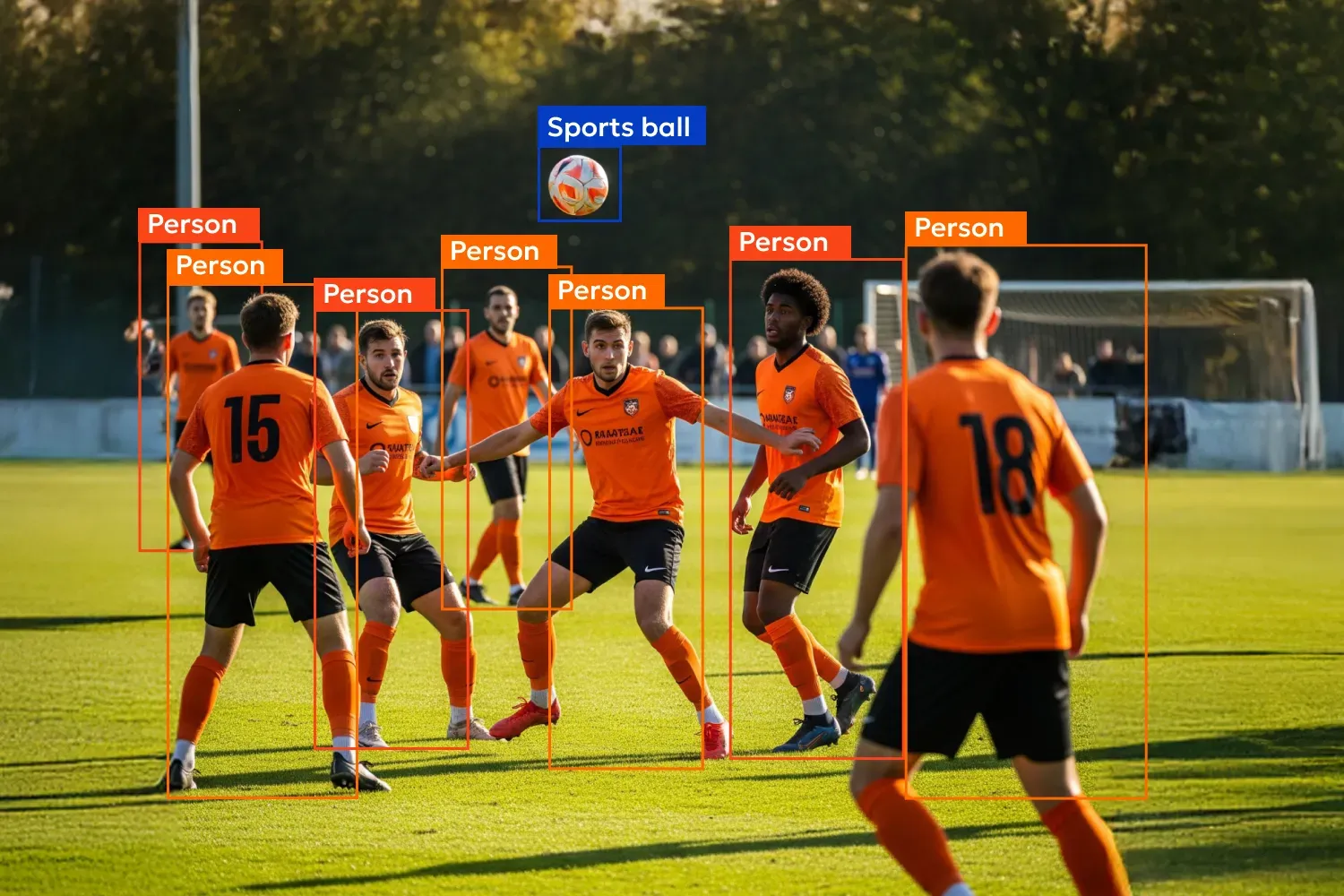
These systems handle complex movement patterns, zigzag motions, and frequent occlusions, especially in dense team formations. In disciplines such as football, basketball, or hockey, tracking enables tactical analysis, workload measurement, and motion heatmaps for each player. In individual sports, like tennis, table tennis, or golf, specialized ball detection algorithms identify object speed, spin, and placement with high temporal precision. For teams and broadcasters, this data supports everything from in-game coaching adjustments to enriched fan visualizations.
For example, football clubs actively deploy real-time tracking (e.g., Premier League) and also use it in Olympic events. Player load metrics and ball trajectory data inform both training and live decision-making.
Tactical game analysis and predictive insight
What patterns lead to a scoring opportunity or a defensive breakdown? Beyond tracking, computer vision helps teams understand tactical flow: formation shifts, spatial usage, pressure zones, and off-the-ball movement. This level of visibility is impossible to achieve through manual review alone. By integrating past performance data, predictive models can assess future player performance, flag patterns that correlate with team success or breakdown, and even simulate possible outcomes.
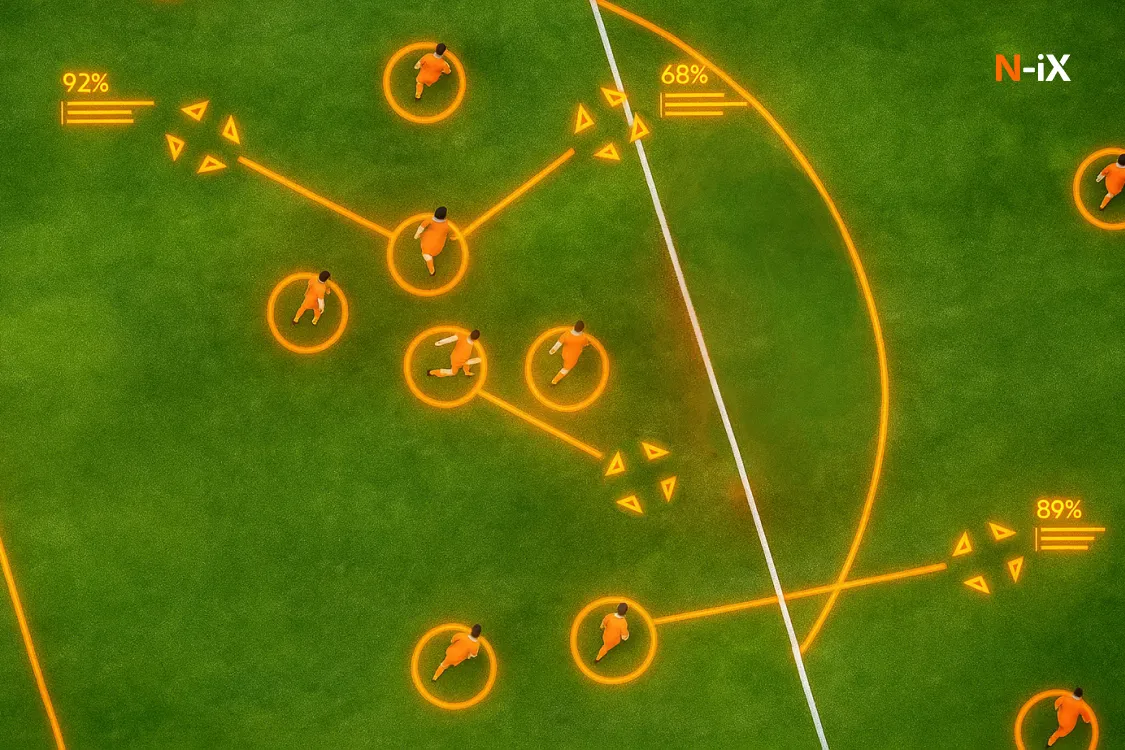
Performance optimization and injury prevention
Every step, twist, and landing puts stress on the body. But which ones signal risk? Computer vision gives coaches and sports scientists a non-intrusive way to monitor biomechanics, capturing posture, joint angles, and gait dynamics in high resolution. Pose estimation models detect early signs of fatigue or injury-prone movement before they develop into medical issues. Real-time motion capture and high-frame-rate video analysis allow sports scientists to intervene before minor inefficiencies escalate into significant health concerns.
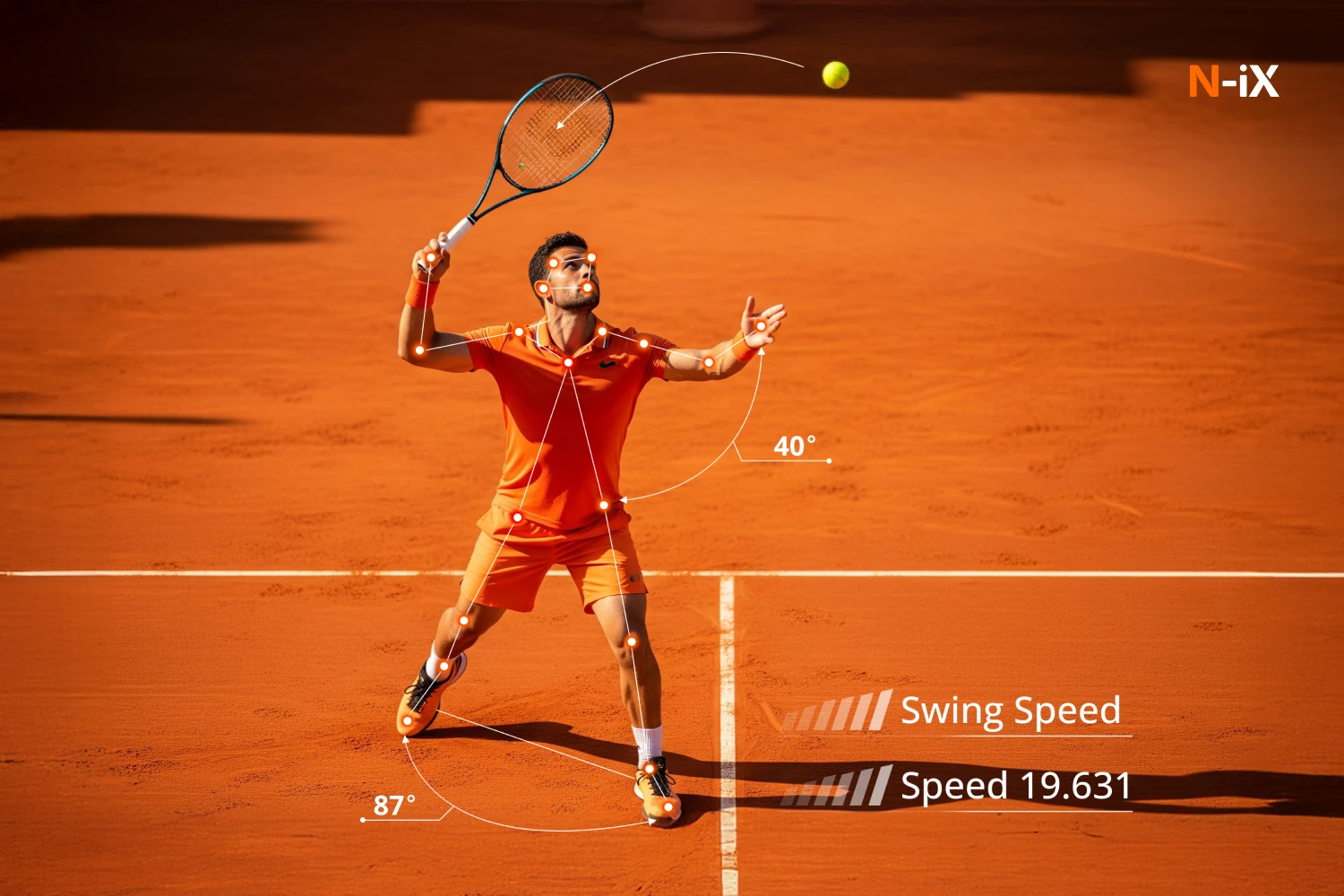
One of the real-world examples of implementing computer vision in sports comes from National Olympic Committees and professional teams across North America and Europe. These organizations increasingly use CV-based movement assessments during athlete onboarding and return-to-play protocols.
Injury prevention extends into rehabilitation monitoring, where CV systems track range of motion, adherence to physiotherapy protocols, and readiness for return-to-play. Since extended recovery time can affect both performance and team outcomes, this application offers real value in supporting athlete well-being and maintaining competitive readiness.
Master real-time precision with edge computer vision—get the practical guide!


Success!

Coaching support
What if coaches could see in real time what previously took hours of post-game analysis to uncover? With CV-driven coaching tools, that is now the standard. These systems flag tactical mismatches, monitor workload, and suggest substitutions based on evolving game data. They serve as real-time assistants, pulling insights from current and historical footage to support split-second decisions. The aim is to augment them with pattern recognition and predictive feedback that no analyst could provide live.
The future of CV in coaching goes further: virtual coaching and simulation tools now enable AI-based feedback loops that recreate game situations, simulate opponent tactics, and model alternate player decisions. These systems allow coaches to test and refine strategies in virtual space, and give athletes access to interactive scenarios where they can learn from mistakes without physical repetition.
Broadcast enhancement
Today's sports viewers expect more than just replays. Computer vision brings data-driven storytelling to the screen: from trajectory overlays and live heatmaps to 3D reconstructions and AR-infused highlights. Computer vision sports tracking news provide visual layers deepen engagement and can open new monetization channels. Automated summarization tools extract key moments, while intelligent assistants respond to fan queries on rosters, stats, or venue logistics. Broadcasters gain efficiency through automated camera switching, clip tagging, and real-time video summarization, all driven by visual understanding.
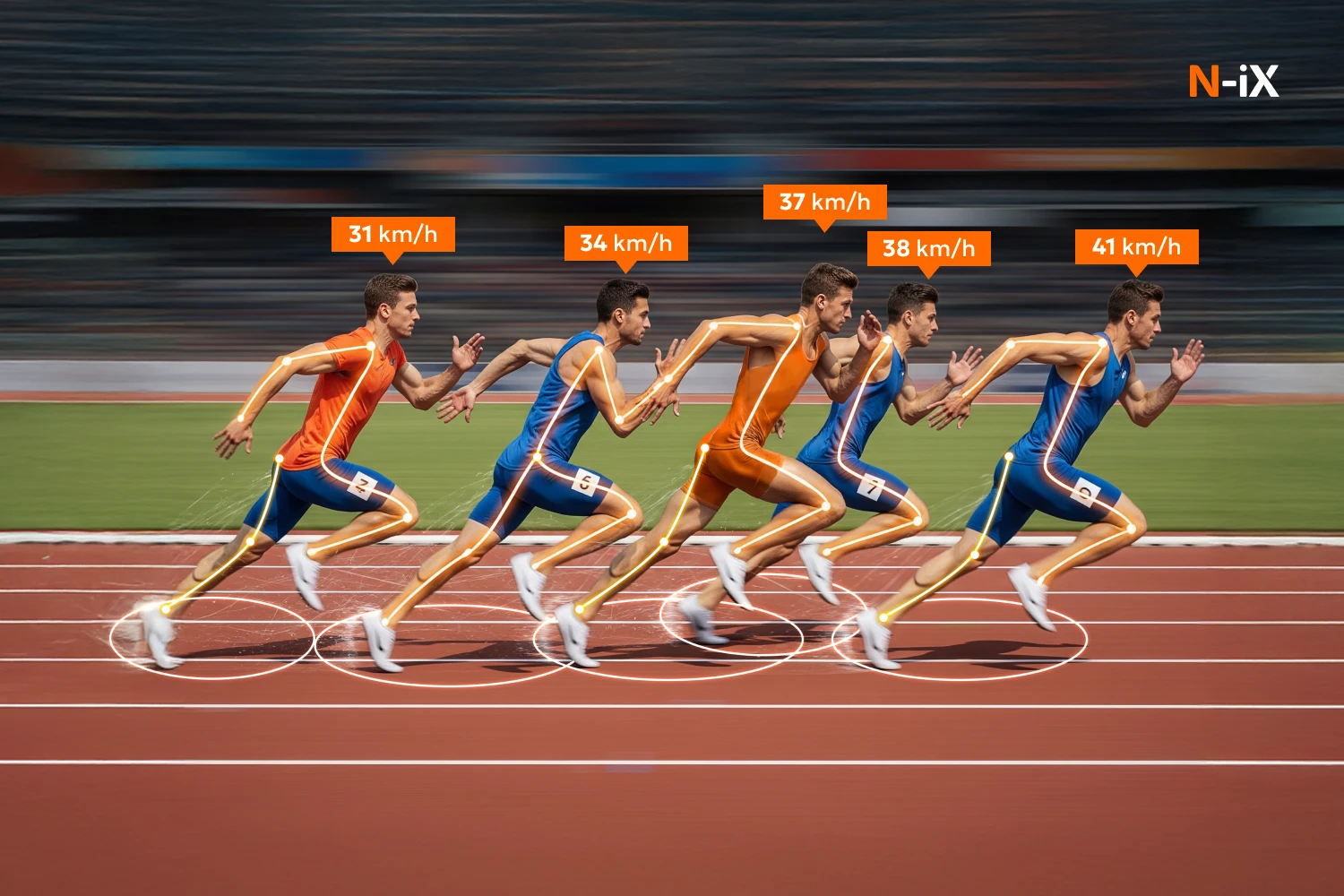
In global tournaments (e.g., FIFA World Cup, Wimbledon, NBA Finals), broadcasters now employ computer vision sports analytics news to enrich the viewing experience with:
- 3D visual reconstructions of player and ball movement during critical plays;
- AR-infused replays showing real-time distances, angles, and shot paths;
- Automated content clipping and highlight generation tailored to fan preferences and regional broadcast constraints.
Officiating and rule enforcement
Can we trust the right call was made, especially when margins are razor thin? Computer vision is integral to systems, ensuring decisions are based on measurable evidence. From goal-line verification to offside lines and gesture recognition, CV tools reduce ambiguity and raise trust in officiating. Line-calling in tennis and ball tracking in cricket now rely on real-time multi-angle vision, often outperforming human observation in accuracy and speed.
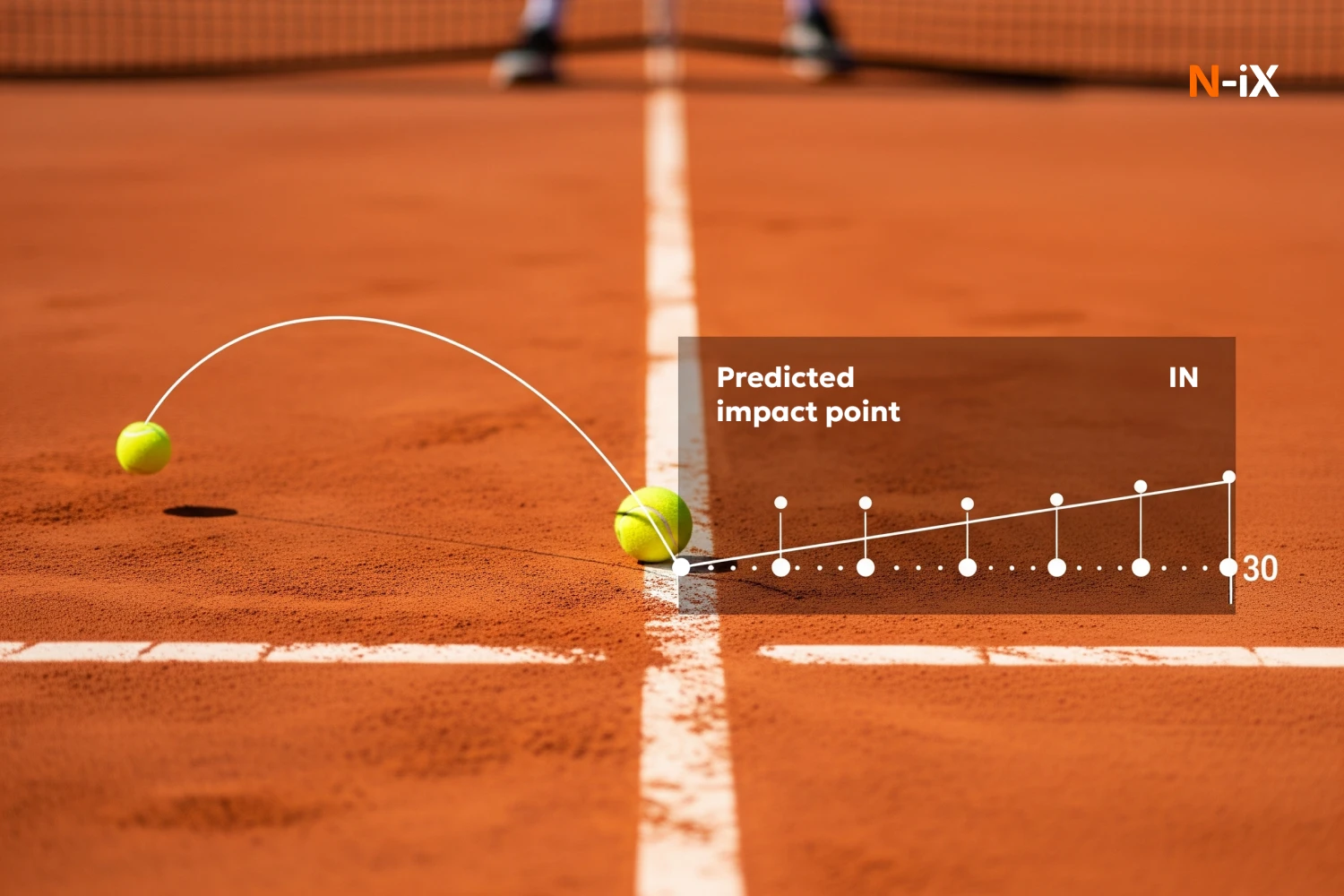
For example, video assistant referee (VAR) systems in football and decision review system (DRS) in cricket use multi-angle video and vision-based object tracking to assist in decision reviews. These systems detect offside positions, foot faults, line calls, and goal-line events with frame-level precision, often faster and more accurately than human officials under pressure.
Technical skill assessment
Is that shooting form efficient? Is the swing technically sound? Beyond tracking and officiating, computer vision plays a growing role in technical evaluation. Using pose detection and action recognition, it identifies micro-movements in jumping, sprinting, swinging, or serving. These systems support skill evaluation, technical correction, and athlete feedback loops. In cricket, for instance, automated models analyze bowling actions for performance and legality. Body segmentation and motion patterns are used in swimming to identify inefficiencies and optimize stroke technique.
Computer vision in sports enables pre-match preparation grounded in opponent modeling: understanding how rival teams structure their offense, where defensive gaps tend to appear, and how their play evolves under pressure. Coaches can identify exploitable patterns and adapt formations accordingly. In post-match analysis, CV data supports performance audits, helping coaching staff assess tactical execution with clarity and precision. Vision systems analyze angles, force vectors, acceleration patterns, and timing discrepancies.
Venue safety and operational monitoring
With tens of thousands of fans entering stadiums, how do you ensure order and safety without adding friction? Computer vision supports security teams by monitoring crowd flows, detecting anomalies, and controlling access through facial recognition or innovative gate systems. Venue-wide systems monitor crowd density, detect unauthorized access, and identify abnormal behavior for emergency response times in real time. Facial recognition systems speed up ticketing and gate control while reducing fraud. CV technologies are increasingly integrated with broader security ecosystems to create resilient, intelligent sports environments.
Read more about prominent use cases of computer vision in security
Equipment optimization and product R&D
A less discussed application of computer vision supports equipment testing and innovation. In controlled lab or training environments, vision systems track how gear interacts with the athlete's body in real-world motion: helmet stability during contact, the aerodynamic behavior of footwear, or glove grip adjustments during play. The same vision-driven testing is used in prototyping and custom gear development, enabling data-informed innovation cycles for elite sports equipment.
Real-world challenges and why most systems struggle to scale
Even with significant progress in AI and machine learning, computer vision in sports remains one of the most complex operational domains. Most systems today are caught between proof of concept and limited-scope MVPs. Below are the most pressing technical and operational barriers that limit the performance and generalizability of computer vision models in sports.
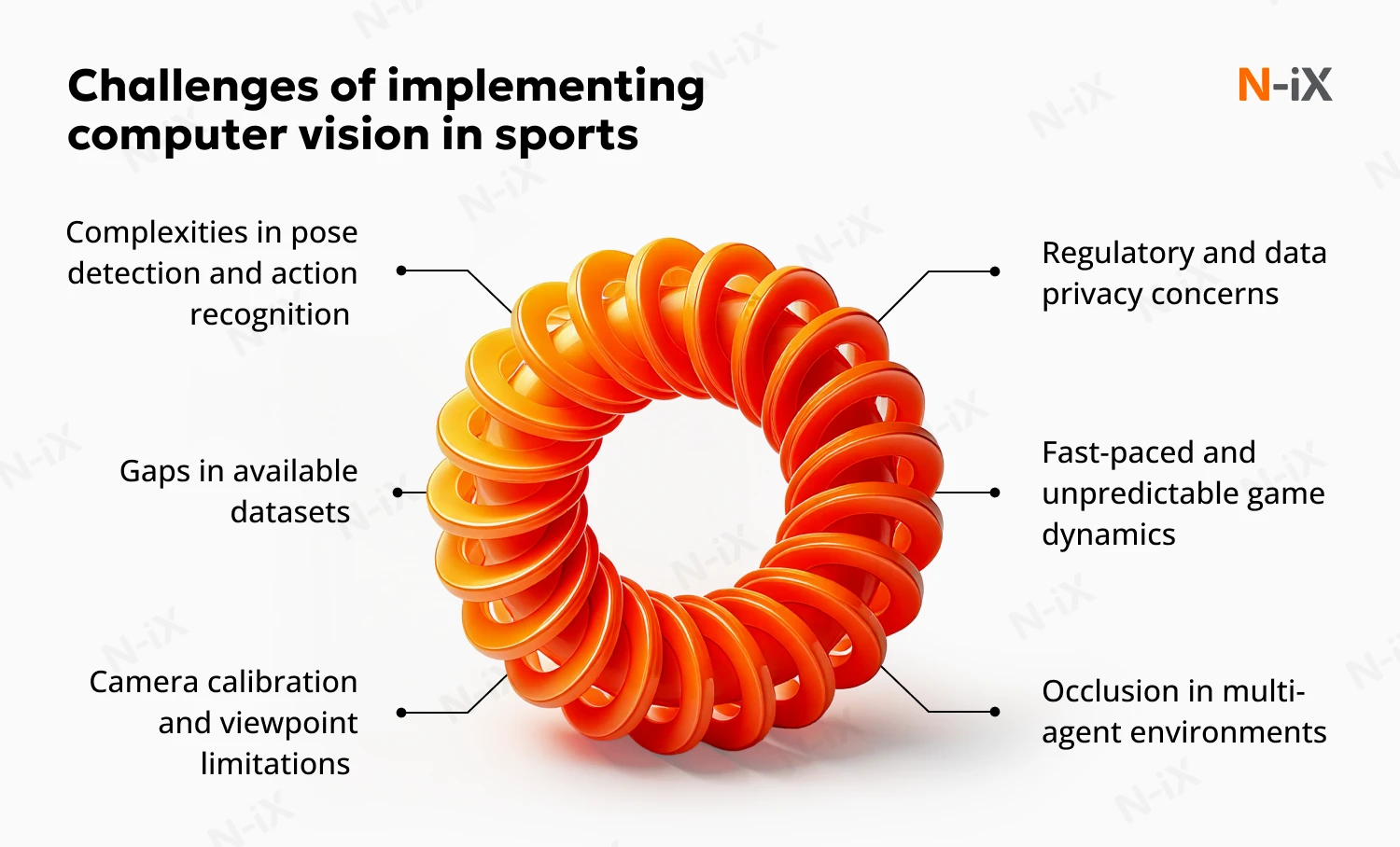
Regulatory and data privacy concerns
While computer vision drives innovation in sports analytics, it also introduces significant regulatory and ethical challenges, particularly around biometric data collection, consent, and surveillance.
Athletes are increasingly subject to real-time tracking, facial recognition, and pose estimation, often without clear ownership rights or explicit consent mechanisms. As CV systems process deeply personal data, such as gait, facial expressions, and fatigue markers, the risk of regulatory breaches grows.
Recent incidents have sharpened this focus:
- Spain's top football league, La Liga, was fined €1 million under GDPR for covert monitoring via its mobile app.
- Project Red Card saw over 850 footballers take legal action over unauthorized use of performance data.
- 25 of the top 100 stadiums worldwide now use facial recognition, often without clear disclosure or opt-in procedures, raising major privacy concerns.
In the United States, regulatory frameworks like the Biometric Information Privacy Act (BIPA) in Illinois have introduced stringent requirements for how biometric data can be collected and processed. Under BIPA, organizations must obtain explicit consent, outline retention schedules, and provide deletion protocols, conditions that many off-the-shelf CV solutions fail to address. Similar legislation is gaining traction in other states, expanding the regulatory minefield for tech providers and sports organizations.
These developments highlight a pressing need: CV solutions in sports must be designed for compliance by default. That means embedding robust data governance practices into system architecture, consent capture mechanisms, anonymization pipelines, opt-out infrastructure, and athlete-facing transparency tools. It also requires legal alignment with regional frameworks like GDPR, BIPA, and forthcoming AI Act regulations in the EU.
Fast-paced and unpredictable game dynamics
Athletes rarely follow predictable patterns. In high-intensity settings, players rush, change direction frequently, and respond to real-time unfolding events. This unpredictability makes motion tracking and trajectory prediction a serious computational challenge. Many models struggle to account for sudden directional changes, dense group formations, or chaotic sequences, especially during counterattacks or scrums.
Occlusion in multi-agent environments
In most team sports, players regularly obstruct one another or the ball, leading to partial or complete occlusion. This process significantly disrupts tracking continuity and often causes identity switches between athletes. Tracking often fails until the occluded object reappears in full view. Traditional trajectory-based methods, without sophisticated re-identification logic, struggle with these interruptions. Any model built for real-time inference must be robust to frequent occlusion events, yet this aspect remains one of the weakest points across existing systems.
Camera calibration and viewpoint limitations
Many implementations rely on broadcast feeds or wide-area camera networks, which pose several technical constraints. Camera motion can destabilize tracking unless corrected for in real time. Low-textured playfields, such as grass or hardwood, complicate calibration, as they lack visual anchor points. Systems must also contend with varied viewing angles, inconsistent zoom levels, and editorial cuts in the broadcast, which further fragment the data stream.
Gaps in available datasets
Despite years of academic and commercial progress, high-quality, labeled datasets in sports remain limited-particularly for non-mainstream sports or specialized tasks like player-pose classification and ball trajectory prediction. While notable datasets exist (e.g., RELI11D, VideoBadminton, DeepSportRadar, SkiTB), they often cover specific sports or tasks. Training robust models still requires diverse, balanced, and extensively annotated data. Cross-domain generalization remains a challenge: a model trained on football, for instance, rarely performs well on volleyball or cricket due to differences in player posture, court layout, and motion patterns.
Complexities in pose detection and action recognition
Detecting athletic poses such as sprinting, jumping, or pivoting is highly sensitive to resolution, lighting, and occlusion. Even state-of-the-art pose estimation algorithms often degrade in crowded scenes or partial views. Full-body action recognition is further complicated by overlapping movements and object interference. In some cases, the object of interest occupies most of the frame, masking the player's movement altogether.
Here's how we solve each challenge at N-iX:
- We use transformer-based architectures, often in combination with CNNs, to better capture high-speed, chaotic motion across frames. In sports applications, transformers have become an industry standard for sequence modeling and spatiotemporal analysis [3];
- Our systems integrate pose-based re-identification and adaptive resolution enhancement for accurate player tracking;
- We implement optical flow correction and re-identification pipelines to recover continuity after occlusions;
- Our real-time systems include dynamic model adaptation to lighting, shadows, and background noise;
- We build synthetic data generation pipelines and cross-sport domain adaptation models to improve computer vision in sports training coverage;
- We use multi-scale pose estimation fused with temporal models trained on real gameplay footage.
How can you move forward?
Computer vision systems in sports succeed when three fundamentals align: reliable data capture, robust model governance, and an operational pipeline that pushes insights to the point of need, whether a coach's tablet, a broadcast control room, or an edge device beside the pitch. The use case range is clear: injury-risk alerts, high-resolution player tracking, automated officiating support, and fully annotated performance archives for scouting or rights-holder analytics.
If your organization is ready to convert visual data into operational gains, without expanding headcount or tolerating black-box risk, let's outline a plan built on measurable milestones and industry-grade engineering.
We start with clearly defined goals like reducing injury risk, optimizing training cycles, or improving decision accuracy for referees and coaches. From there, we develop scalable computer vision solutions that work in real-time environments, integrate with legacy systems, and comply with data protection standards. If you're evaluating how to bring computer vision into your sports operations or scale the work you've started, it's time to define what success looks like for you. And then build it deliberately.
References
- A Survey of Advanced Computer Vision Techniques for Sports
- A Comprehensive Review of Computer Vision in Sports: Open Issues, Future Trends and Research Directions
- TranSPORTmer: A holistic approach to trajectory understanding in multi-agent sports scenarios
Have a question?
Speak to an expert
